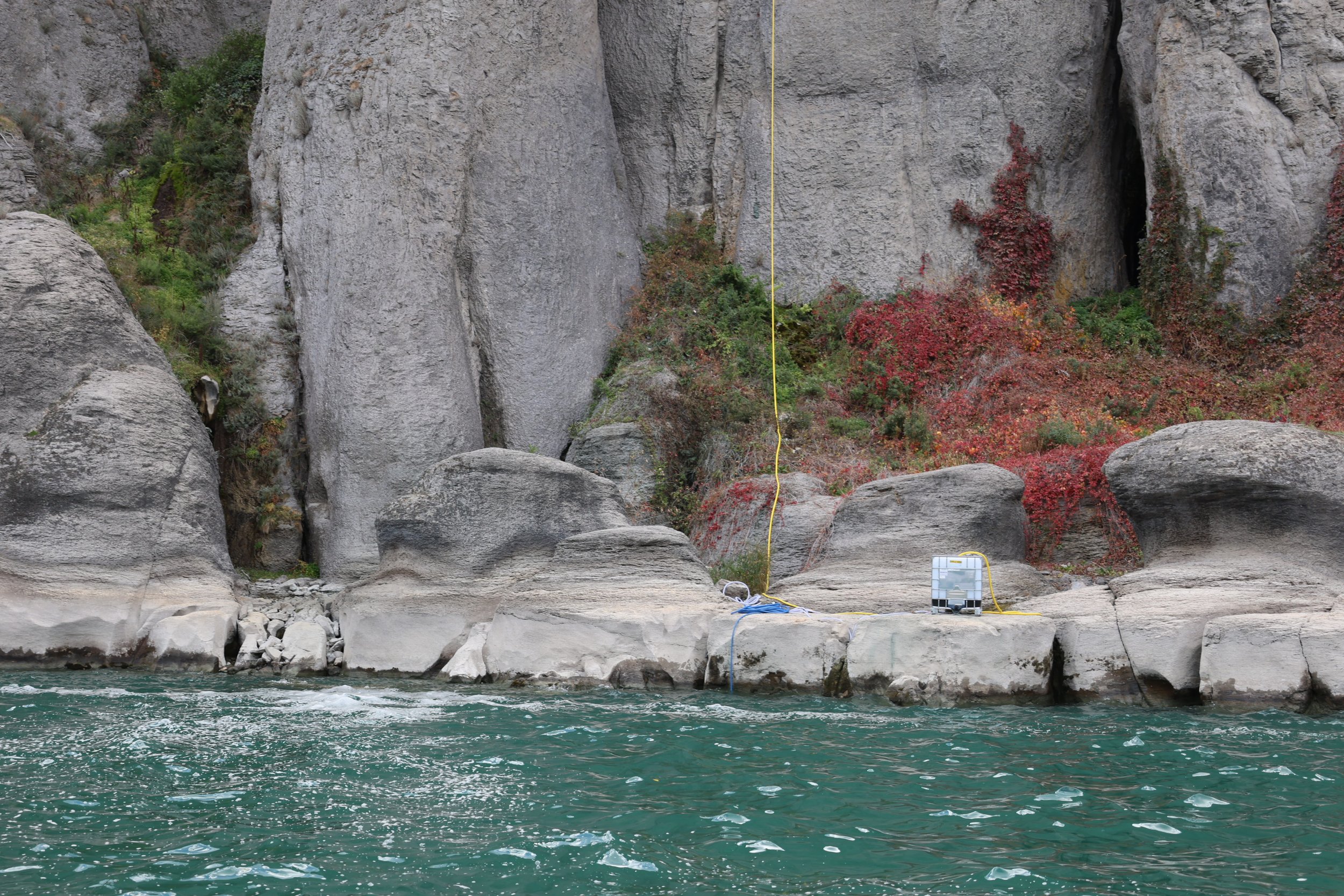2025 snake River Treatment plan
ISDA is committed to a strategic, science-driven response to fully eradicate this invasive species and protect the state’s waterways. The treatment plan is shaped by extensive ongoing sampling and careful evaluation of the Snake River’s complex flow patterns and site-specific dynamics.
The 2025 treatment utilized the chelated copper product, Natrix, which began September 30 and concluded on October 14. View the full treatment plan below.
This treatment plan addressed survey data showing a concentrated population from Sageview to Shoshone Falls (3.5 miles). The focus was on maintaining an effective treatment concentration of 1 ppm of copper through the treatment area over a 200-hour period, followed by dissipation of copper to background levels downstream. The plan also accounted for river depth, freshwater inputs, sediment sorption, and variable flows to ensure treatment effectiveness across the complex river system.
2024 Snake River treatment plan
As a part of the rapid response to the 2024 detection of quagga mussels in the Snake River, ISDA implemented a multi-faceted treatment plan. View 2024 treatment details HERE.
Chelated copper treatment
The first 2024 treatment took place October 8-20, 2024 and utilized the chelated copper treatment product, Natrix (the same product used to treat the Snake River in 2023). The 2023 Natrix treatment significantly reduced the quagga mussel population in the Snake River.
The 2024 treatment area was from just downriver of Hansen Bridge to Centennial Waterfront Park. The dissipation area of the treatment is from Hansen Bridge to Kanaka Rapid.
The product was strategically metered into the water to achieve 1 ppm and was maintained at the level by close monitoring by ISDA staff. The contracted applicator, the manufacturer, and ISDA staff extensively monitored the application 24 hours a day.
The chelated copper dissipated as anticipated, with the river reaching pre-treatment copper levels by early November.
The 2024 Natrix treatment fish mortality was limited. Fish populations in the affected stretch of river were not stocked after the 2023 treatment, resulting in smaller populations to be affected by the 2024 treatment. Observed fish mortalities in 2024 predominately included carp and sucker. For more information on fish mortality, contact Idaho Department of Fish and Game.
Potassium chloride treatment
ISDA implemented a potash (potassium chloride) treatment February 24, 2025 in still water pools on the Mid-Snake River. The potash treatment was the second phase of the multifaceted treatment plan following the 2024 chelated copper treatment. ISDA chose the potash treatment to target any potential quagga mussels in still water/deep pool sections of the river.
The second treatment reflects ISDA’s commitment to using every available tool to combat the invasive quagga mussels. By combining the chelated copper and the potassium chloride treatments, ISDA is maximized efforts with the ultimate goal of eradication.
Still water/deep pools are isolated to rocky areas/waterfalls. These still water pools are left when high water recedes and disconnects the pools from the river. The isolated pools were treated with copper during the 2023 and 2024 treatments. Potash will be used in the still water pools as an extra measure toward eradication of the mussels.
2023 Snake River Quagga Mussel Treatment
Since the discovery of quagga mussel larvae in the Snake River, ISDA has been dedicated to an aggressive approach for treatment to protect Idaho’s waters from these mussels. ISDA utilized a comprehensive treatment strategy, which was developed with the review and assistance of several federal, state and local agencies and stakeholders.
The 2023 chelated copper treatment was the first treatment of its type and scale ever attempted in North America. Sampling results indicate the chelated copper treatment was effective in reducing the mussel population.
the product
Natrix - Natrix is a copper-based product that is labeled and approved by EPA for these kinds of aquatic applications. Similar copper-based products are used in Idaho and other states for mussel, fish, algae, and plant control.
The product was applied at a rate that will eradicate mussels but is below the drinking water standard for humans.
treatment application
The ten day treatment began October 3 and concluded October 13, using a comprehensive treatment plan. The treatment application occurred across a sixteen-mile section – less than one percent – of the Snake River and was intended to eradicate quagga mussels at all life stages.
The product was slowly metered into the water to achieve 1 ppm and was maintained at the level by close monitoring by ISDA staff. The contracted applicator, the manufacturer, and ISDA staff extensively monitored the application 24 hours a day.
The treatment went as planned in achieving target application rates at the 1 ppm of the product. The product diffused as we anticipated, not seeing any measurable copper levels or impact at the 16-mile downstream point. The application was completed October 13th and copper levels in the area were back to the normal baseline within a couple weeks post treatment.
Treatment impacts
In 2023, the adult mussel identified in the river prior to treatment died within 48 hours of the first treatment block. The 2024 monitoring results showed a decrease in quagga mussel presence in the affected stretch of the river compared to the pre-treatment surveys conducted in 2023.
Sampling results indicate that the chelated copper treatment was effective in reducing the mussel population. Quagga mussel sampling is ongoing to assess the continued success of the treatment.


